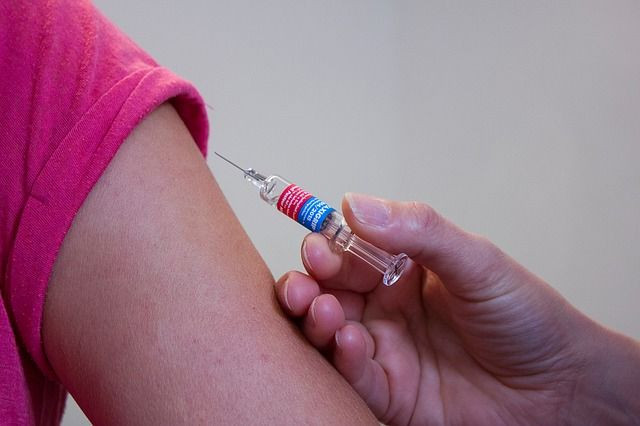HPV Vaccination And Genital Warts: 2 Doses Are Just As Effective As 3 In Preventing STD

The HPV vaccination is recommended for girls and boys to prevent infections, and subsequent conditions they may cause, such as various cancers and genital warts. Now, new research has shown that two doses of the vaccination are just as effective at preventing against genital warts as the traditional three doses.
This research backs the new recommendations of the Centers for Disease Control and Prevention, which, as of this year, urge that all children under 15 years old receive only 2 doses of the HPV vaccine. The results also highlight the effectiveness of the vaccine, which can still be administered up until early adulthood.
"The CDC and WHO based the new two dose schedule primarily on immunogenicity results, but there was very little research on how effective that recommendation has been," said Rebecca Perkins, the study's lead author, in a recent statement. "This study validates the new recommendations and allows us to confidently move forward with the 2 dose schedule for the prevention of genital warts."
For the study, the team of researchers from Boston University Medical center looked at nearly 400,000 girls from around the country to measure the rate of genital warts based on the number of vaccinations the girls received. In doing so they found there was no significant difference in protection from genital warts in girls that received a three-shot vaccination versus those who received only two shots.
The researchers note that their study only focused on the frequency of genital warts in young girls who received the HPV vaccination. They did not study the occurrence of HPV-related cancer in young girls who received different versions of the vaccine. These findings can be backed by real-life research that has shown that rates of HPV genital warts have declined in years since the introduction of the vaccine. Unfortunately, this decline is far more apparent in women than men, mirroring the fact that the vaccine is more heavily pushed on young girls despite equal risk of infection in both genders.
The human papillomavirus is a group of over 200 viruses, but of these, about 40 spread easily from skin and mucous membrane via sexual contact. Most of these viruses are “low-risk” causing only alarming, yet harmless, genital warts. However, of these 40, at least 13 are known to cause cancer. These virus is known to cause cervical, vulvar, vaginal, penile, anal, mouth, and throat cancers.
In addition, while the results are useful, the researchers emphasize that they are only a “stepping stone" into understanding the effectiveness of two-dose HPV vaccines, and more research will be necessary.
Source: Perkins RB, Lin M, et al. Impact of Number of Human Papillomavirus Vaccine Doses on Genital Warts Diagnoses Among a National Cohort of U.S. Adolescents. STD Journal . 2017
See Also:
HPV Vaccine May Eradicate Genital Warts, Australian Study Shows
After HPV Vaccinations Rates of Genital Warts Decline Significantly in Women, but Not Men
Published by Medicaldaily.com



























